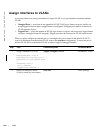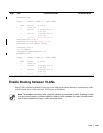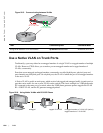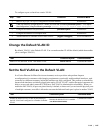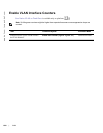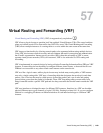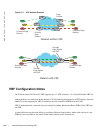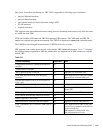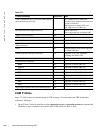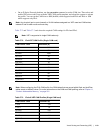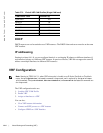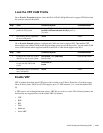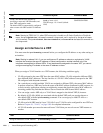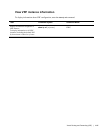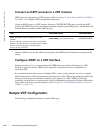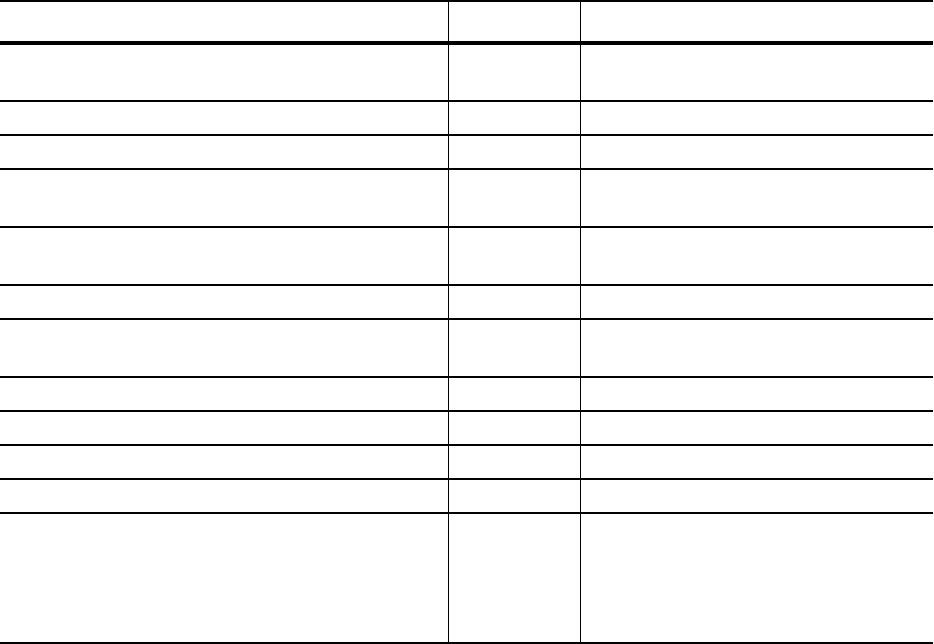
Virtual Routing and Forwarding (VRF) | 1111
Only Layer 3 interfaces can belong to a VRF. VRF is supported on following types of interface:
• physical Ethernet interfaces
• physical Sonet interfaces
• port-channel interfaces (static & dynamic using LACP)
• VLAN interfaces
• loopback interfaces
VRF supports route redistribution between routing protocols (including static routes) only when the routes
are within the same VRF.
FTOS uses both the VRF name and VRF ID to manage VRF instances. The VRF name and VRF ID
number are assigned using the
ip vrf command. The VRF ID is displayed in show ip vrf command output.
The VRF ID is not exchanged between routers. VRF IDs are local to a router.
VRF supports some routing protocols only on the default VRF (
default-vrf) instance. Table 57-1 displays
the software features supported in VRF and whether they are supported on all VRF instances or only the
default VRF.
Table 57-1.
Feature/Capability Supported? Note
Configuration rollback for commands introduced or
modified
Yes
LLDP protocol on the port Yes
802.1x protocol on the VLAN port Yes Supported only for default-VRF
OSPF, RIP, ISIS, BGP on physical and logical
interfaces
Yes OSPF supported on all VRF ports. Others
supported only on default-VRF ports
Dynamic Port-channel (LACP) on VLAN port or a
Layer 3 port
Yes
Static Port-channel as VLAN port or a Layer 3 port Yes
Port-monitoring Yes Mirroring port (MG) has to be in
default-VRF
BFD on physical and logical interfaces Yes Supported on default-VRF ports only
PVST, MSTP, RSTP and 802.1D STP for VLANs Yes
FRRP (if applicable) for VLANs Yes
Multicast protocols (PIM-SM, PIM-DM, MSDP) Yes Supported on default-VRF ports only
Layer 3 (IPv4/IPv6) ACLs, TraceLists, PBR, QoS on
VLANs
Yes ACLs supported on all VRF VLAN ports.
TraceLists are common for entire line card
(except on ExaScale).
PBR supported on default-VRF only.
QoS not supported on VLANs.




